
We see water in a variety of ways. It may be colored by particles, the presence of bacteria, or by reflecting the world above its surface. Ice and snow may reveal a vivid internal blue. Water itself has an intrinsic blue color that is a result of its molecular structure and its behavior.
Rivers and streams
There are other factors that can affect our perception of the color of water. For example, particles in water can absorb light, scatter light, and reflect light. Light may be absorbed by particles and solutes, as evidenced by the darker color of tea or coffee. Green algae in rivers and streams often lends a blue-green color to the water. Some mountain lakes and streams that contain finely ground rock, such as glacial flour, are turquoise. The surface of water can also reflect skylight.
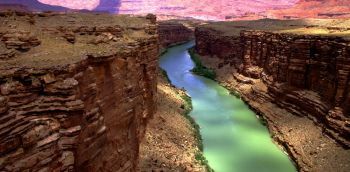
Marble Canyon viewed from the Navajo Bridge over the Colorado
River. The green color of the Colorado River is caused by the algae
bloom in the spring snowmelt, while the Red Sea may get its name from
the occasional bloom of red Trichodesmium erythraeum algae
|

Particles in water can scatter light. The Colorado River is often a muddy red color because of suspended reddish silt in the water.
|
Large bodies of water
It is often easier to appreciate water’s intrinsic blue when looking at large bodies of water, such as lakes, seas and oceans, when we are able to observe how sunlight changes color as it travels through a significant depth of water. When circumstances eliminate the reflection of blue skylight, it may be possible to observe that water is not entirely colorless.
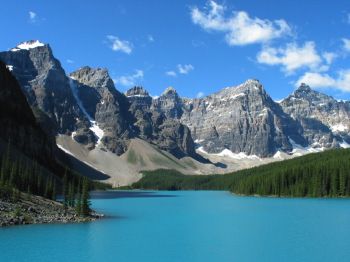
Banff National Park’s Moraine Lake is turquoise because finely
ground rock is present. We are able to observe the blue light produced
by the water’s absorption, because light is scattered by suspended
matter and so returns to the surface. Such scattering can also shift the
spectrum of the emerging photons toward the green, a color often seen
in water laden with suspended particles.
|
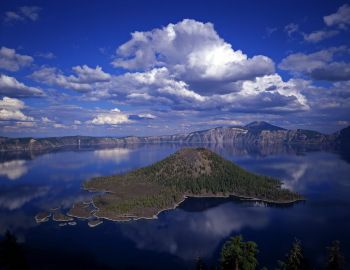
The surface of seas and lakes often reflect blue skylight,
making them appear bluer. The relative contribution of reflected
skylight and the light scattered back from the depths depends strongly
on the observation angle. In this view of Crater Lake (Oregon, USA), the
far side of the lake reflects the sky more, and the near side shows
mostly the actual water.
|
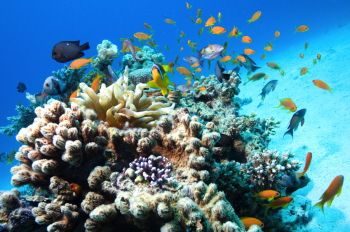
|
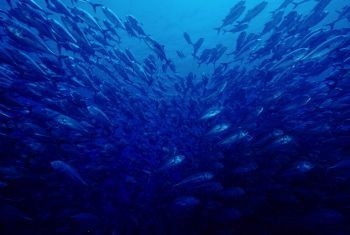
|
|
The blueness of water is very apparent when diving. As one
goes deeper, lower energy wavelengths penetrate the water less,
eventually leaving only blue light from the higher energy end of the
spectrum. Even when using an artificial light source, such as a flash,
the objects close to the observer appear as their real color, whereas
the objects further away appear to be blue.
| |
No comments:
Post a Comment